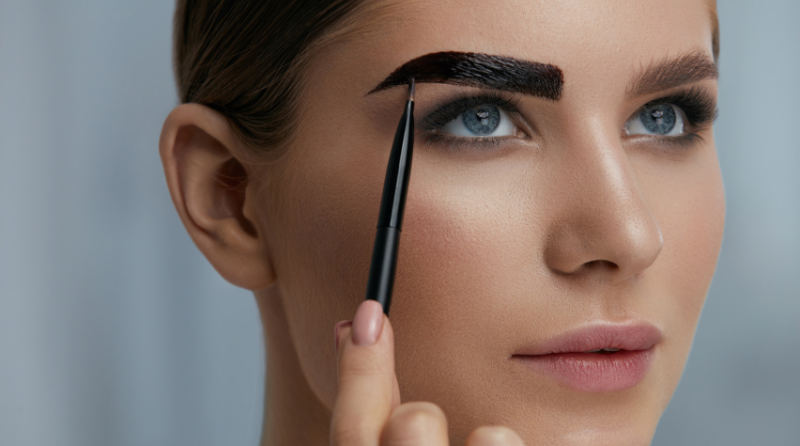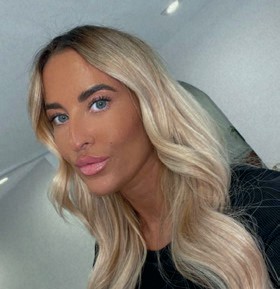How to manage allergens in brow and lash tints


Professional Beauty UK asked Glasgow-based brow artist and educator Kaitlyn Callaghan about the potential allergens in tinting products and how to manage these with clients.

Kaitlyn Callaghan is a brow artist and educator based in Glasgow and a brand ambassador for the Professional Beauty Systems brand Apraise. PB UK October edition of "Ask the Experts," we asked Callaghan about the potential allergens in tinting products and how to manage these with clients
Callaghan says: Adverse reactions can sometimes happen due to ingredients including ammonia, paraphenylenediamine (PPD), resorcinol or peroxide.
PPD is a chemical substance found within most brow and hair tints, and while the majority of clients will be absolutely fine with the ingredient, it can sometimes be an irritant and allergen.
PPD requires oxygen to become active, which is why you always have to mix your tints with a developer to oxidise it. A higher level of PPD is mostly found in tints that are black and dark brown in colour, so you should always be more cautious of these. While tints containing PPD are perfectly safe to use, it is always best to leave this to the professionals.
If a client is allergic to PPD and has a reaction, symptoms can range from mild to being serious very fast. A mild reaction would present as a stinging or burning sensation, itching and swelling, or a red rash that is often raised which should typically disappear after a few days.
If a more severe reaction were to happen, this could cause a local blister which could last for several weeks - you would then advise your clients to apply a gentle emollient to this area.
A patch test is a safety precaution that should always be taken seriously to protect yourself, your business and your client. This allows you to check for adverse reactions before trying something new. Testing the products will allow you to determine how harmful or safe something can be towards your client. This precaution should always be done 48 hours prior to the procedure.
The result of the patch test would determine if your client has an allergy to PPD or not. If they have a positive reaction, it’s a no-go. However, you can then recommend A PPD-free range, such as Apraise’s new PPD-free professional eyelash and eyebrow tints. You would still need to patch-test the client even with a PPD-free range because PPD may not be the only allergen for some clients.

Professional Beauty UK asked Glasgow-based brow artist and educator Kaitlyn Callaghan about the potential allergens in tinting products and how to manage these with clients.

Kaitlyn Callaghan is a brow artist and educator based in Glasgow and a brand ambassador for the Professional Beauty Systems brand Apraise. PB UK October edition of "Ask the Experts," we asked Callaghan about the potential allergens in tinting products and how to manage these with clients
Callaghan says: Adverse reactions can sometimes happen due to ingredients including ammonia, paraphenylenediamine (PPD), resorcinol or peroxide.
PPD is a chemical substance found within most brow and hair tints, and while the majority of clients will be absolutely fine with the ingredient, it can sometimes be an irritant and allergen.
PPD requires oxygen to become active, which is why you always have to mix your tints with a developer to oxidise it. A higher level of PPD is mostly found in tints that are black and dark brown in colour, so you should always be more cautious of these. While tints containing PPD are perfectly safe to use, it is always best to leave this to the professionals.
If a client is allergic to PPD and has a reaction, symptoms can range from mild to being serious very fast. A mild reaction would present as a stinging or burning sensation, itching and swelling, or a red rash that is often raised which should typically disappear after a few days.
If a more severe reaction were to happen, this could cause a local blister which could last for several weeks - you would then advise your clients to apply a gentle emollient to this area.
A patch test is a safety precaution that should always be taken seriously to protect yourself, your business and your client. This allows you to check for adverse reactions before trying something new. Testing the products will allow you to determine how harmful or safe something can be towards your client. This precaution should always be done 48 hours prior to the procedure.
The result of the patch test would determine if your client has an allergy to PPD or not. If they have a positive reaction, it’s a no-go. However, you can then recommend A PPD-free range, such as Apraise’s new PPD-free professional eyelash and eyebrow tints. You would still need to patch-test the client even with a PPD-free range because PPD may not be the only allergen for some clients.

